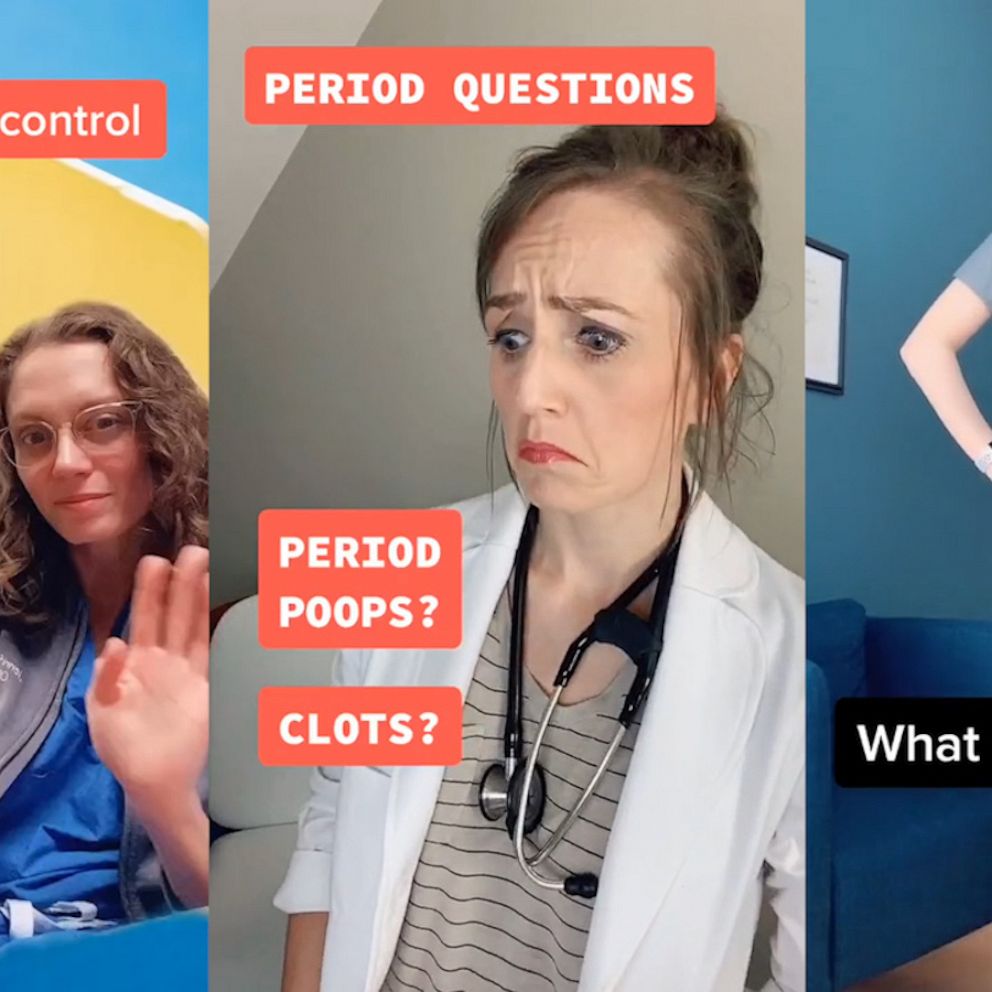Tara Lipinski opens up about undergoing endometriosis surgery to break taboo of 'hush hush topic'
Lipinski said she considers herself "one of the lucky ones" after surgery.
Olympic gold-medal-winning figure skater Tara Lipinski is opening up about undergoing endometriosis surgery in hopes of breaking down barriers around the condition that affects millions of women.
"The irony of my endometriosis diagnosis is that I knew almost nothing about a disorder that affects one in 10 women. That’s 176 million people [in worldwide cases]," Lipinski shared on Instagram. "I’d never heard another woman mention 'endo' or the complications and pain that accompany it. And that definitely shows the lack of information that’s out there and the comfort level that affected women have discussing their endometriosis."
"To me, it feels like a hush hush topic that women feel they just need to tough out," the 38-year-old wrote. "No woman should live in pain or think 'this is just something I have to deal with.'"
Endometriosis, a medical condition whereby tissue similar to the tissue that normally lines the inside of the uterus grows outside of the uterus, may affect more than 11 percent of American women between the ages of 15 and 44, according to the U.S. Department of Health and Human Services Office on Women's Health (OWH).
Lipinski said she had “intermittent pain” for years that she overlooked and didn’t discuss completely with her doctors.
“Over the last five years the pain progressed, but because it wasn’t constant or startlingly intense, I just chose to ignore it,” she wrote. “I figured that since I didn’t have crippling pain and it wasn’t significantly impacting my life, I could just block out my concern.”
When the pain became more intense this year, Lipinski said she started researching endometriosis and then found a surgeon who was able to help, writing, “I think that might be the biggest obstacle of endo care – finding a surgeon who knows exactly how to navigate this complicated disease.”
After studying her options, Lipinski said she chose to have an “excision procedure, that uses robotic scissors to cute the endo from the places where it exists.”
Calling herself “one of the lucky ones,” the California-based Lipinski described her surgery as a success, noting that “pretty much 100 percent” of her endometriosis was removed.
“After a week or so I began to forget I had the surgery until I’d look down at the battle wounds across my stomach,” she wrote. “It felt so good to finally have a diagnosis.”
What is endometriosis?
Endometriosis strikes when endometrial tissue, the tissue that lines the uterus, grows outside of the uterus and onto other areas of the body, like the ovaries, fallopian tubes, vagina and cervix, according to the U.S. Office on Women's Health.
The cause of endometriosis is unknown but its symptoms are well-known: Painful menstrual cramps, chronic lower back and pelvis pain, pain during and after sex, bleeding or spotting between periods and digestive problems like diarrhea, constipation, bloating and nausea. These symptoms are most often experienced during menstruation.
Endometriosis also makes it harder for women to get pregnant.
Any girl or woman who has menstrual periods is vulnerable to endometriosis. It is more common, however, in women ages 25 to 35.
There is no known cure for endometriosis. There are several treatment options, including birth control and other hormonal treatments, and a medication, Orilissa, specifically studied and marketed for the treatment of endometriosis pain.
Another treatment option is laparoscopic excision surgery, where doctors remove scar tissue and growths, according to Dr. Tamer Seckin, a New York-based endometriosis specialist who co-founded the Endometriosis Foundation of America with actress Padma Lakshmi.
What women need to know
Many women wait as long as 10 years for an endometriosis diagnosis, according to the EFA.
That is not to say though that women who take years to be diagnosed are not advocating for themselves at every point in the journey. It's quite the opposite.
"Today’s women are exceptionally educated on this," said Seckin.
Seckin's advice for female patients is to track their symptoms diligently and to note, in particular, where the symptoms fall in relation to their menstrual cycle.
Symptoms of endometriosis, like cramping and digestive issues, are often misdiagnosed as Crohn's disease or irritable bowel syndrome when doctors don't ask if the pain is associated with the patient's period, Seckin noted.
Women should also know that they should not be suffering in silence, according to Seckin. He shared six symptoms that women should watch for -- not because they mean a woman automatically has endometriosis but because women should not have to live with pain.
These symptoms are most commonly found during menstruation, when the tissue is the most inflamed.
1. With periods, any pain that lasts beyond two days is not normal.
2. Any pain that sends them into the fetal position, even for just one day, is not normal.
3. Any pain associated with vomiting or severe GI disturbance is not normal.
4. Pain during deep [sexual] contact, deep penetration is not normal.
5. If you have pain around bowel movements or get constipated during your period, that’s not normal.
6. Increased gas and bloating associated with your period is not normal.
Most important, according to Seckin, is to find a doctor whom you trust.
"If women tell their doctors [their symptoms] and their doctors’ eyes don’t lock on them, find another doctor," he said. "There are doctors who are interested in endometriosis."







